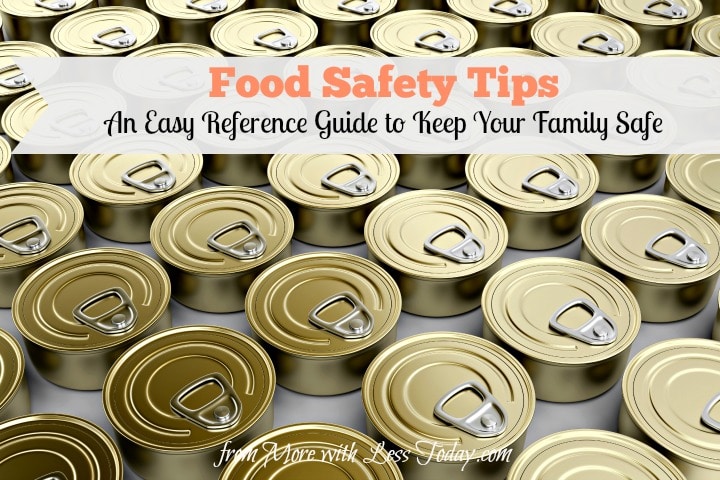Food Expiration Codes
At SunRidge Farms, instead of expiration dates, we use a Julian date code. Life & Storage Requirements, you can better estimate the shelf life of your food.
A health-conscious consumer is one who reads food labels before making a purchase, but what do all those numbers mean?
While it's easy to figure out the basic stuff – like calories and nutritional content - there's a lot of other information on food labels that can be helpful, especially numbers and dates stamped on the bottom of cereals, canned goods, packaged snacks and even fresh produce.
According to the Institute of Food Technologists, most U.S. food companies stamp lot codes and/or expiration dates on their products. There are two types of codes:
- Lot Code: When manufacturers produce a product, they do so in batches. Each batch is assigned a unique series of numbers that makes it possible for manufacturers to track exactly when a problem occurred and which products need to be recalled.
- Expiration Dates: These are numbers represented in a date format that are used to provide a guideline for consumers so they will know when a food product is either no longer safe to eat or might not taste as good as it did when originally produced.
Shelf-life lingo
There is little government regulation when it comes to expiration dates stamped on packages. Therefore, don't treat expiration dates or lot codes with a 'one-size fits all' approach, the Institute says.
According to the United States Department of Agriculture (USDA) Food Safety and Inspection Service, there are a few different types of dates you should look for:
- Sell By: is a guide for stores to know how long they can display a product before its quality begins to diminish. An item will be edible for some time after the 'sell by' date, but it is no longer the highest possible level of quality.
- Best if Used By/Best Before: is a guide to the quality or flavor profile of the food and does not refer to safety. For example, sour cream may grow increasingly sour over time, but it remains safe to consume even when past the point of peak freshness.
- Use By: is the closest to an expiration date similar to that on medicines. Using them after the date is not recommended. In some instances, medicines may be ineffective past their 'use by' date and food may lose nutrients, develop potentially harmful bacteria and lessen in quality.
Food product TLC
When you're shopping for food, be sure to examine the packaging for dents, tears or broken seals. No matter what the date on the outside of the package says, there are ways you can care for products to help maintain their shelf life. Temperature, humidity and light can all affect the quality of a product, especially when it comes to meat, dairy and other highly perishable products.
The temperature in your freezer should always be 0°F. Freezing food is a great way to prolong the life of leftovers or store food to be used at a later date. However, it must be noted that while freezing can preserve food safety and it can also sometimes affect the way the food tastes after defrosting. For optimal quality, frozen beef needs to be consumed within three months, while pork keeps in the freezer for six months and lamb, veal, poultry and venison hold between 8-12 months.

When buying perishable food, such as meat, poultry, dairy products and certain types of fruit and vegetables, bring the food home promptly after purchase and refrigerate it accordingly. If you aren't able to use it in a timely fashion, store it in the freezer to avoid spoilage.

Diablo 2 v1.13c. If you're not able to refrigerate or freeze perishables immediately, be sure they are stored at a temperature of 40°F or below by using insulated bags, ice or keep a cooler in the back of your car for transporting perishable groceries.
Most food products today come with a 'best by' date. This is not actually an expiration date, but more like a time in which the contents will be best to consume. It is recommended that you treat the dates as expiration dates for safety and best quality. However, the date format or location can sometimes be confusing or hard to find. Nepali audio songs free download.
Search through your pantry for canned goods that were not recently purchased. These are generally at the back of the shelf.
Pick up the can and inspect the top and bottom for text printed on the can itself, not the label.
Look for the phrase 'best by' in the text.
Change your position once you're been spotted and if you manage to take them all out, you might get a full 3 stars as your reward. Your aim will have to be almost perfect to hit them from over 120m away. Ghost sniper game.
Find the date after the phrase. The date may also be alone, without the phrase.
Notice the date format used and interpret the 'best by' or expiration date accordingly. Most cans list the date in a standard MM/DD/YYYY format, some with or without slashes. Others only list the month and year 12-2008, or Dec/2008.
Tips
Not finding a date spelled out on the can? The date of manufacture is probably listed in code; visit Mealtime.org for information on reading the coded production dates. Then add 2 years to that date of manufacture for an approximate expiration date.
If you still have trouble you can call the products manufacturer and try asking them to talk you through the dating code on the can.
Much of the information provided in the text is plant information not necessary to finding the date.
Some cans only list a year and month. Consider the date to be the first day of the listed month.